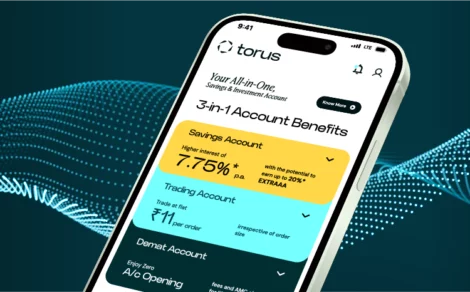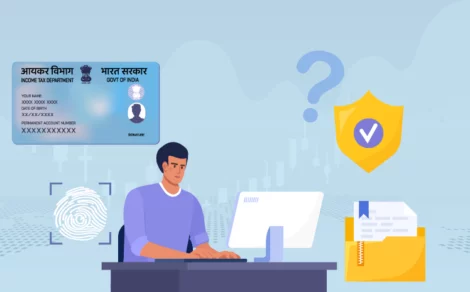Do you know what DDPI is? As mentioned above, it is an official document to instruct your depository participant (DP) or broker for some specific activities such as:
- Sell shares from your holdings
- Pledge shares
- Execute mutual fund transactions
- Sell shares from your demat account without the need for CDSL T-PIN verification.
The Demat Debit and Pledge Instruction (DDPI) was introduced by the Securities and Exchange Board of India (SEBI) to enhance the process of pledging and transferring securities in electronic form.
Before the introduction of DDPI, you had to submit an eDIS (Electronic Delivery Instruction Slip) to sell securities. This was a time-consuming and error-prone process, which posed challenges in terms of efficiency and delayed order placement, leading to price differences.
The DDPI facility addresses these concerns by automating the process of pledging, debiting, and un-pledging securities in a way that is fully electronic and easier to manage.
How does DDPI Work in the Indian Stock Market?
Demat Debit and Pledge Instruction, or DDPI, allows depository participants or brokers to sell shares directly from your demat account. By providing direct authorisation, it eliminates the need for additional verification, such as T-PINs and OTPs, which were required for the previous system.
This simplifies and makes the selling process faster, more convenient, secure, and efficient. DDPI also allows your broker to pledge and re-pledge shares if you are using margin trading to make your trading more flexible.
What are the Features of DDPI?
These are some of the notable features of DDPI you should know:
Enhanced and Improved Security
The design of DDPI ensures that your securities transactions are safer. In DDPI, the authorisation scope is more specific. It is limited to debit, pledging and demat services that reduce the chances of unauthorised transactions and misuse of your investment.
Transparent Transactions
With DDPI, you can benefit from greater transparency when pledging and debiting securities. It gives you a better understanding of authorised actions as an investor. It also allows you to monitor your trading activities effectively.
Control of Investors
By shifting to DDPI, you can get better control over your demat accounts. This gives you more flexibility in authorising specific transactions. Thus, it becomes a more investor-friendly system.
Adhere to Regulatory Changes
SEBI’s move to replace POA with DDPI reflects a dedication to enhancing investor protection and maintaining the integrity of the securities market. By adopting DDPI, you can ensure compliance with the most recent regulatory standards.
Efficient Settlement Process
DDPI has simplified and improved the settlement process by streamlining the authorisation for debiting and pledging securities, leading to faster and more dependable trade settlements.
How Can You Submit a DDPI Request?
With the DDPI, you can send both online and offline requests. The process depends on the depository participant. You can save significant time if your broker gives you an online submission option.
Here is the process to submit a DDPI request online:
- Choose a Stock Broker/Depository Participant: If you do not have a Demat account, you have to start by choosing a trustworthy broker to open a new trading and demat account. You will need to provide the necessary KYC and bank information.
If you are looking for a zero AMC demat account, you can open one with us for free. At Torus Digital, we offer a lifetime zero AMC facility. - Access the Profile Section: Log in to your account, go to the ‘Profile’ section, and choose the ‘Submit DDPI’ option. This step can vary across different platforms.
- Fill in the Form: You will get an online application form. Fill out the form accurately and check the required Demat Debit and Pledge Instruction details.
- E-Stamp Form: As per regulatory guidelines, you must submit an e-stamp application along with your DDPI form.
- Verify and Sign: Review all the information entered and electronically sign the forms. To enable DDPI, you have to pay a one-time fee of ₹118 (₹100 + 18% GST).
- Aadhaar and OTP Verification: You may be asked to provide Aadhaar card details and verify your contact information through an OTP. This step can vary depending on your broker.
- Submit the Request: After verifying your mobile phone number via OTP, you can submit your DDPI request. Your broker will process the request, which typically takes up to 3 business days.
If the online submission option is not available, you can either request the form from your broker or download and print it from their official website.
After filling out the form with the required information, you have to submit it to the broker’s office for verification. Your broker will then authenticate the details.
Comparison between DDPI and POA
Check the table below to understand the difference between DDPI and POA:
| Parameters | DDPI | POA |
| How It Works | It gives prior authorisation to the broker to debit securities from a demat account and deliver them to the exchange. | It gives the online broker complete legal authority to make decisions on the investor’s behalf. |
| Ownership and Control | You retain ownership, and securities remain in your accounts. | Brokers have access to all securities. |
| Process | The DDPI process involves sending online pledge requests, which is less time-consuming and more effective. After submitting the request, you don’t need to authorise each order. | The POA process involves the submission of physical documents, which is more time-consuming as it requires physical stamps and signing. |
| Digital Execution | The DDPI slip can be digitally signed and stamped. | A physical signature is mandatory to execute POAs, and digital execution is prohibited. |
| Risks Involved | Lower risk as you have full ownership of your securities. | Higher risk as your broker can control the ownership of securities. |
Is DDPI Mandatory For Investors?
For stock market trading, the DDPI is not mandatory for investors. If you use e-DIS (Delivery Instruction Slip), you can avoid using DDPI and POA systems when selling shares. However, to use the e-DIS facility, you have to verify your holdings using T-PIN and OTP every day to sell your shares.
This is a hassle and time-consuming process for most of the investors and traders. Therefore, you may prefer to submit a DDPI for hassle-free transactions. If you are an investor who already submitted a POA request before September 1, 2022, you can trade under the POA facility. If you wish to stop using POA, you can choose to switch to DDPI.
In short, DDPI is not compulsory for investors, but it gives you a seamless and more secure option for trading in the stock market. After the implementation of this system, the number of demat account fraud cases has been reduced.
What is the Future of Existing DDPIs and POAs
If you’re a financial market investor and have not given a power of attorney (POA) to your depository participant (DP), you can now choose the Direct Demat and Trading Power Instruction (DDPI) system.
If you haven’t selected either DDPI or POA, you’ll need to submit an online or offline Delivery Instruction Slip (DIS) for each transaction. This means that for each trade, you have to submit a DIS request with a TPIN and OTP verification. To avoid this inconvenience, you may submit the DDPI form.
It’s important to note that DDPI was first introduced in the 2nd half of 2022. If you entered the market after November 18, 2022, you need to submit the DDPI form. Conversely, the POA form applies only to investors who completed it before September 1, 2022.
Though DDPI is a new system, its usefulness and convenience make it a likely candidate for replacing the other authorisation systems in the stock market in the future.
Summing Up
DDPI is an important initiative by the SEBI to make stock market transactions easier and more secure for investors. If you regularly make transactions in the stock market, you may have faced an issue with the e-DIS facility, where you need to enter T-PIN and OTP every day. With the DDPI, you just have to submit the form once, and then you do not need to verify your holding again.
For hassle-free trading, open a lifetime free demat account with Torus Digital and save on AMC charges. Open your account now!








